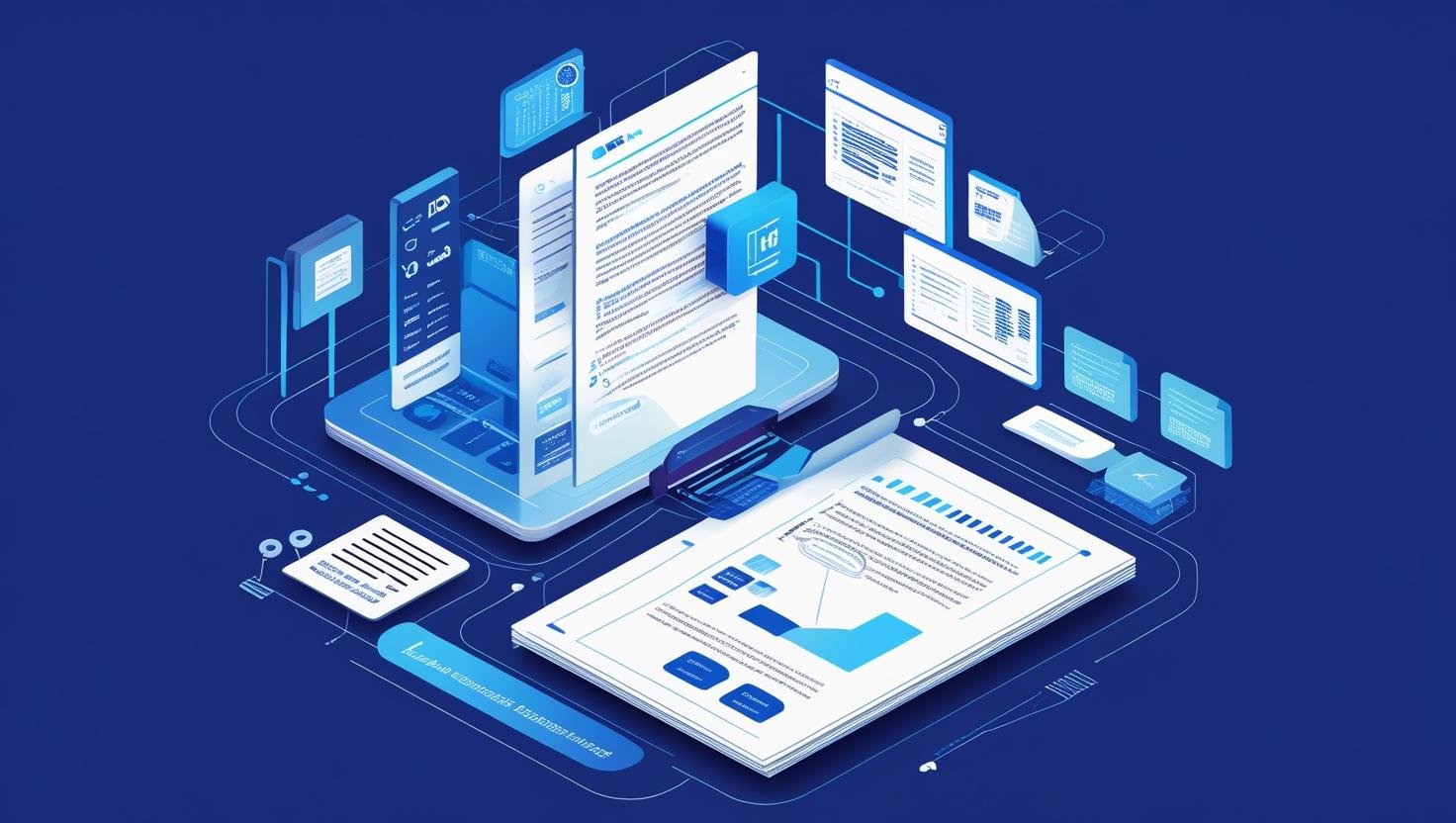AI-Powered OCR in Legal Document Management : Benefits, Use Cases, and Practical Guide

In today’s fast-paced legal environment, handling massive amounts of documents efficiently is crucial. From contracts and briefs to case files, legal professionals constantly process documents with complex information. Traditionally, reviewing and organising these documents has been a labour-intensive and time-consuming task. However, with advancements in technology, AI-powered Optical Character Recognition (OCR) has revolutionised the way legal documents are managed, offering substantial benefits, practical use cases, and an effective solution for efficient data extraction.
Understanding AI-Powered OCR in Legal Context
OCR technology is designed to convert different types of documents, such as scanned paper documents, PDFs, or images, into editable and searchable digital formats. While traditional OCR has been around for years, AI-powered OCR leverages artificial intelligence and machine learning to achieve higher accuracy and adaptability. This advanced OCR can understand legal terminology, recognize complex document structures, and handle a wide range of document types, including handwritten notes and non-standardized forms.
Benefits of AI-Powered OCR for Legal Document Management
1. Enhanced Efficiency and Time Savings
One of the primary benefits of using AI-powered OCR in legal practices is the significant reduction in time spent manually reviewing and entering data from documents. By converting documents into searchable text, OCR enables legal teams to quickly locate specific information, reducing hours of manual work. This increased efficiency allows legal professionals to focus on higher-value tasks, such as case analysis and strategy development.
2. Improved Accuracy and Reduced Errors
Manual data entry is prone to human error, which can lead to costly mistakes in legal processes. AI-powered OCR helps mitigate these risks by accurately capturing information from legal documents, even when the text is complex or handwritten. Advanced AI algorithms learn from data patterns and adapt to various formats, further increasing accuracy and minimising the likelihood of errors.
3. Cost-Effective Document Management
For law firms, time is money. By automating document processing with AI-powered OCR, firms can save on labour costs associated with manual document handling. Additionally, the technology reduces the need for physical document storage, allowing firms to shift to a more sustainable and cost-effective digital storage model.
4. Enhanced Document Accessibility and Compliance
AI-powered OCR enables digital archiving of documents, making them easily accessible and retrievable for future reference. This is especially valuable for compliance with legal standards, as documents can be stored securely and accessed as needed without compromising data integrity. Additionally, OCR's ability to create searchable files aids in quick audits and ensures adherence to industry regulations.
Practical Use Cases of AI-Powered OCR in Legal Document Management
1. Contract Analysis and Review
Contracts often contain dense and complex language that requires thorough review. AI-powered OCR can expedite this process by extracting relevant clauses, identifying key terms, and flagging discrepancies. Legal teams can then focus on interpreting and analysing the contract’s content rather than spending hours on basic data extraction.
2. Litigation Document Processing
In litigation, vast volumes of volumes of documents must be organised and reviewed to build a solid case. AI-powered OCR helps streamline this process by converting scanned documents and handwritten notes into searchable text. This allows attorneys to quickly locate relevant case information, witness statements, and evidence without sifting through paper files.
3. Compliance and Due Diligence
Law firms often conduct compliance checks or due diligence for clients, requiring extensive document review. OCR technology can speed up this process by extracting critical data and generating summaries for compliance checks, making the firm’s workflow more efficient.
4. Legal Research and Discovery
AI-powered OCR enables efficient legal research by digitizing and organising case law, statutes, and historical documents. Researchers can quickly retrieve relevant information, enhancing the speed and accuracy of their research processes.
How to Implement AI-Powered OCR in Legal Workflow
Implementing AI-powered OCR into legal workflows involves several steps
1. Choose the Right OCR Solution
Look for an OCR solution specifically designed for legal needs, as these are better equipped to handle the complexities of legal documents. Many vendors offer OCR software that can integrate directly with existing legal management systems
2. Digitise Your Documents
Before implementing OCR, ensure that physical documents are digitised through scanning. Clear and high-resolution scans improve OCR accuracy
3. Integrate with Document Management System (DMS)
For seamless document handling, integrate the OCR software with a DMS, which stores and organises digital files. This integration enhances searchability and data retrieval
4. Regularly Train and Update the OCR System
AI-powered OCR systems learn and improve over time. Regularly updating the software ensures that it adapts to any changes in document format or content, maintaining accuracy.
Conclusion
AI-powered OCR transforms legal document management by enhancing efficiency, reducing costs, and improving data accuracy. From contract analysis to compliance and discovery, OCR offers practical applications that streamline legal workflows and empower firms to make data-driven decisions. As legal technology continues to evolve, firms that embrace AI-powered OCR will be better positioned to stay competitive and deliver high-quality service to clients.
